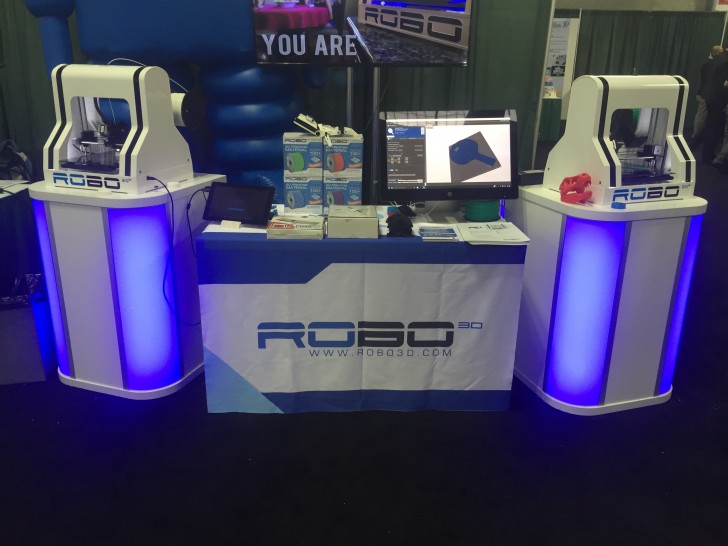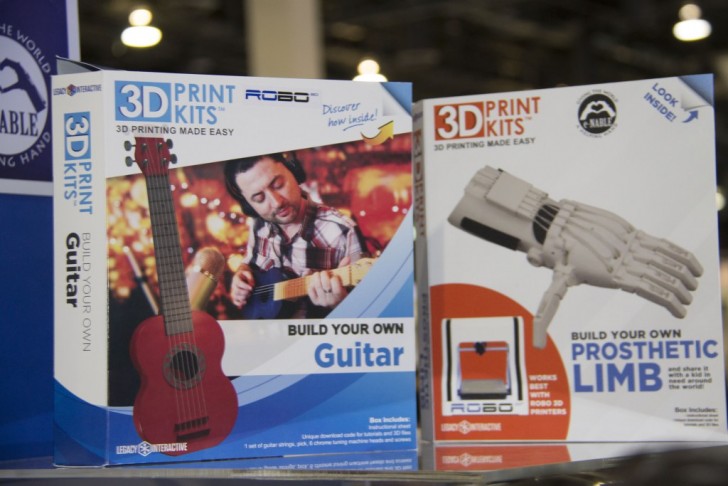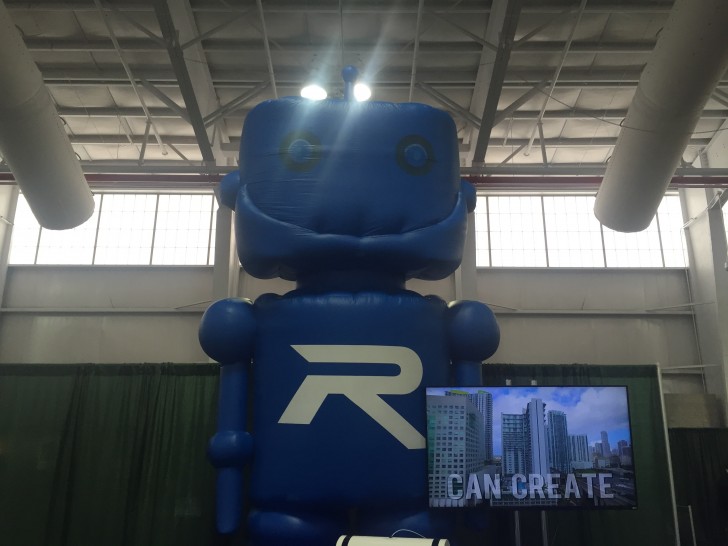As I was strutting from expo booth to expo booth at this year’s Inside 3D Printing New York, one particular booth had quite the particular crowd around it. I was curious about what kind of 3D printing miracle could be happening over at the Robo 3D table, but was bit surprise to see the excited attendees gathered around and playing Super Mario Bros within a 3D printed arcade box. After I sat down and talked to Robo 3D’s CEO Braydon Moreno, I soon learned that this old school arcade was actually one of a handful of kits that Robo 3D was putting together to go along with the upcoming release of the ROBO 3D R2 and ROBO 3D R2 Mini.
Moreno started, “We are two new machines coming out in August, and I think they’re going to be fantastic, they’re going to kick the crap off a lot of the other machines out there. We have the R2 Mini machine coming in at around $599, and the next-gen R2 which we think will be coming in at around $1,000, it’s going to be a great machine. We’ve been testing it and printing at phenomenal speeds, we’re really focused on the out-of-the-box experience and how the UI will work, just to make it as easy as possible.”
When I asked about what improvements Robo 3D is trying to implement in their new line of printers, their were a lot of new features to cover. It seems that overall, the Robo 3D engineering team was focused on both speed and convenience. “Our engineer is building the new printer so that we will be able to release future software for it, it’s got sensors to detect filament running out, whether the machine is in the right placement, we can add on cameras, it’s got a super nice touchscreen interface. We’re building an app right now for it that will do mobile connectivity, so you can print from a mobile device. We’ve been printing at 250, almost 300 mm per second, it’s zipping around and printing at really good quality. We’ve been going under 50 micron on it, going down to those levels of quality is outrageous. We really think it’s going to be a bulletproof product, that’s what we’re going for, rugged, versatile, looks nice but works, works, and works. “
Although Moreno and the Robo 3D team are certainly enthusiastic about their new and improved 3D printers, they seem especially focused on providing content to their consumers as well. Moreno was adamant about the new DIY kits they were conjuring up, explaining that the consumer base needs a helping hand to really get them excited about what desktop 3D printing is capable of.
Moreno continued, “But on top of that, we’re focused on the content side, we’re going to spend a lot of this time building out these kits. I think use cases will help expand the category as a whole. Makeable.com was a platform we started to build out a year-and-a-half ago, and it was going to be a paid content platform, and we realized that’s not the angle, that’s a longterm goal. So we made hybrid of Makeable.com into a kit platform, we’re going to build out our own line of kits and also go to other manufacturers and get them to create kits as well, and turn it into a kit marketplace. One-stop shop, everything you need to build, kind of like Instructables.com except it’s all there in a box. The controllers, the motors, instruction booklet, where to go and get the files. And that allows us to add things like new body kits for our drone, performance parts, little cameras, we’re trying to get people out of just printing Yodas.”
As for the types of kits, Robo 3D is looking to release kits for headphones, drones, arcade boxes, guitars, prosthetics, and more, looking to instantly engage their consumers the true power of 3D printing. “We’re designing a headphones kit right now, where you 3D print your own headphones, it comes with the speaker and everything you need, I think people are going to be jazzed about it. Custom headphone that no one else has, they can print them in carbon fibre or any material, I think it’ll be really cool, and so do our retailers. We’re selling them on our printer’s price point and look, but we also have the content and the packs, little thumb-drives with files we’ve designed for $20. It’s not a huge revenue center for us, but for the consumer who doesn’t know 3D printing, they go in there and see all this content, projects, and ideas, they go wow, this company actually cares to give me content.”
The kits will have every non-printed component needed, as well as all of the files released along with it, and even new, reinvented files later on, which will allow their customers to become a part of future developments. “We’re just really excited about these kits, I think it’s something people have never seen yet with 3D printing. What we’re doing is giving you full access to the future of whatever happens. If you buy the drone kit, if you buy it and go on this cloud based system, we can give you access to new body kits. Imagine you buy and build the drone, then two weeks later we release a new body style or component, you can just print and rebuild it right there , now you have a new drone. So the consumer is a part of the product development with the kits, I think people will be excited about that. We’re going to have some really interesting stuff, to show you can create products you never thought you could on a 3D printer.”
Moreno hopes that these kits will help desktop 3D printing rise above the snag that it’s hit as of recently. He seems to feel that just handing the 3D printer over to the consumer is just not enough, these potential makers need to know what they can create of their device right away. “That’s why we’re focused heavily on creating use cases and fun projects that involve 3d printing,” Moreno continued. “We’re building the bait and using the 3D printer as the fishing pole they’re going to need. Hopefully it’s a strategy that will work. On the consumer side, we’re at this trough and people are trying to figure out what to do, and we think the only logical thing to do is creating the uses. With this kit platform, it’s something people aren’t used to seeing, so they’re going to get excited about it. If we can just create that instant solution, an easy Ikea-esque kit to put together, I think people are going to be more inclined to see 3D printing as a solution in the home.”
Again, it all comes back to content. What good is a household 3D printer with a purpose? Robo 3D is trying to give their consumers the power to become a maker right off the bat. They’ve even teamed up with the volunteer prosthetic organization e-NABLE to create a kit that could potentially make an impact across the world. Moreno described the importance of getting their community engaged with things such as social projects. “There’s so many hardware manufacturers now, we need to focus on building the brand, the community, the content. Even social projects, we’re doing a kit with e-NABLE, that’s one we want to give away with the next model. When they get the printer and open it up, they can join e-NABLE find someone in need of a prosthetic through them, and involve the consumer in a fun and social element, we want to get them involved.”
As for the future of 3D printing, Moreno seems to be more practical about getting 3D printing from a niche market to a mass consumer one. To him, people want high quality products, and they want them fast. “I don’t really think it’s going to become a mass market machine until something like Carbon 3D’s technology comes down in price, something of that nature where you can press a button and in two minutes you have an object. I think then people will be like ‘whoa I can build something that big in a couple of minutes?’ So we obviously want to work towards that, developing the speed side, because eventually FDM will max out, physics doesn’t allow it to go much faster while keeping quality. If we can create a machine that’s a lot faster, we’ll have a much better opportunity to push into more consumer households.”






